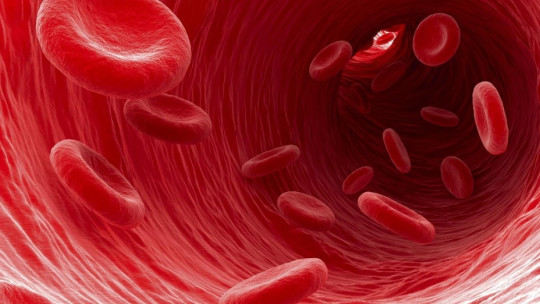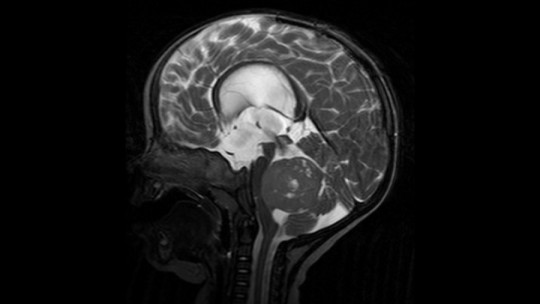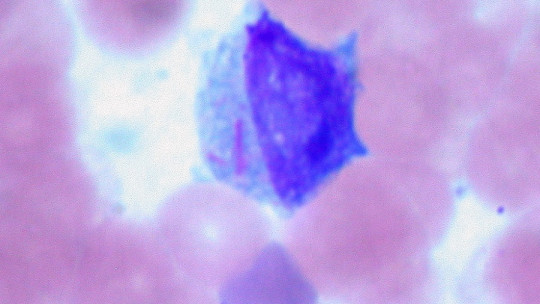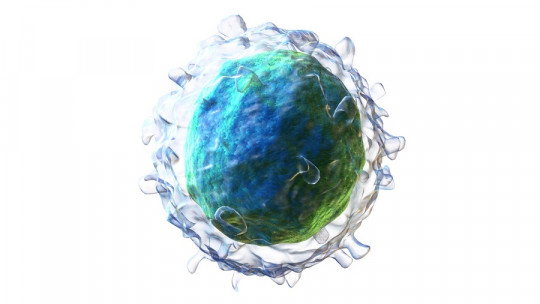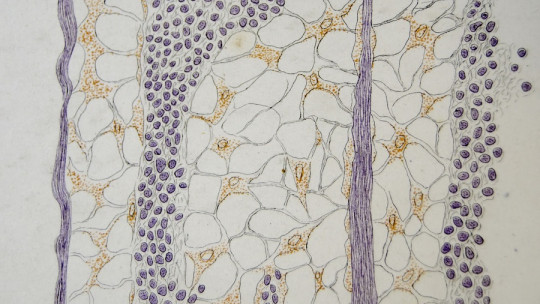Most people know the term leukemia. You know that it is a very aggressive and dangerous type of cancer in which the cancer cells are found in the blood, which affects everything from babies to the elderly and probably also originates in the bone marrow. It is one of the best-known myeloproliferative syndromes. But it is not unique.
In this article we will briefly describe what are myeloproliferative syndromes and we will indicate some of the most frequent ones.
Myeloproliferative syndrome: what are they?
Myeloproliferative syndromes are a group of syndromes characterized by the presence of a excessive and accelerated growth and reproduction of one or more types of blood cells ; specifically the myeloid lines. In other words, there is an excess of some type of blood cells.
These types of problems originate due to excessive production of stem cells which will end up producing red, white blood cells or platelets. In adults these cells are produced only by the bone marrow, although during development the spleen and liver also have the capacity to produce them. These two organs tend to grow in these diseases because the excessive presence of myeloids in the blood causes them to recover this function, which in turn causes an even greater increase in the number of blood cells.
Yes ok Symptoms may vary depending on myeloproliferative syndromes that we are talking about, generally coincide in appearing typical problems of anemia, such as the presence of weakness and physical and mental fatigue. It is also common to have gastrointestinal and respiratory problems, loss of weight and appetite, fainting, and vascular problems.
Why do they occur?
The causes of these diseases are associated with mutations in the Jak2 gene on chromosome 9, which causes Erythropoietic stimulating factor or EPO acts continuously (in subjects without these mutations, EPO only acts when necessary).
In most cases these mutations are not hereditary but acquired. It is speculated that The presence of chemicals, exposure to radiation or poisoning may influence
Some of the main myeloproliferative syndromes
Although with the passage of time new syndromes and variants of these are discovered, in general Myeloproliferative syndromes are classified into four types differentiated largely by the type of blood cells that proliferate.
1. Chronic myeloid leukemia
The disease discussed in the introduction is one of the different existing leukemias and one of the best-known myeloproliferative syndromes. This type of leukemia is caused by the excessive proliferation of a type of white blood cell known as granulocyte.
Fatigue and asthenia, bone pain, infections and bleeding are common. In addition, it will produce different symptoms depending on the organs where the cells infiltrate.
It usually appears in three phases: the chronic phase, in which asthenia and loss of that appear due to the viscosity of the blood, loss of appetite, kidney failure and abdominal pain (at which time it is usually diagnosed); the accelerated phase, in which problems such as fever, anemia, infections and thrombosis arise (this phase being the one in which bone marrow transplant is usually used); and the blastic, in which symptoms worsen and the level of cancer cells exceeds twenty percent Chemo and radiotherapy are usually used, along with other medications to combat cancer.
2. Polycythemia vera
Polycythemia vera is one of the disorders classified within myeloproliferative syndromes. In polycythemia vera, the bone marrow cells cause the appearance of erythrocytosis or the excessive presence of red blood cells (the cells that carry oxygen and nutrients to the rest of the body’s structures) in the blood. More than the number of blood cells, What marks the emergence of this disease is the amount of hemoglobin that is transported. A higher number of white blood cells and platelets is also observed.
Blood becomes thicker and more viscous , which can cause occlusions and thrombosis, as well as unexpected bleeding. Typical symptoms include flushing, congestion, weakness, itching and pain of varying intensity (especially in the abdomen), dizziness and even vision problems. One of the most specific symptoms is generalized itching throughout the body. Also pain with redness of the The extremities is common, caused by occlusion and circulation difficulties in small blood vessels. Uric acid also tends to increase.
Although It is serious, chronic and requires treatment and control of possible complications this disease does not usually shorten the life expectancy of those who suffer from it if treated correctly.
3. Essential thrombocythemia
This syndrome is characterized by the excessive production and presence of platelets in the blood. These cells mainly fulfill the function of blood clotting and are related to the ability of wounds to heal.
The main problems that this disease can cause is the provocation of thrombosis and bleeding in the subject, which could have serious repercussions on health and even end life of the subject if these occur in the brain or heart. It can lead to myelofibrosis, which is much more complex.
It is generally considered that this problem does not necessarily shorten the life of those who suffer from it, although periodic checks should be carried out to control the level of platelets and, if necessary, reduce it through treatment.
4. Myelofibrosis
Myelofibrosis is a disorder. It can be primary if it appears on its own or secondary if it is derived from another disease.
Myelofibrosis is one of the most complex myeloproliferative syndromes On this occasion, the bone marrow stem cells that should produce blood cells generate them in excess in such a way that, in the long run, increases are generated in the fibers of the marrow that end up causing the growth of a kind of scar tissue that takes the place of the marrow. Blood cells, likewise, end up being immature and unable to perform their functions in a normative manner.
The main symptoms They are due to anemia caused by the immaturity of blood cells , the excessive growth of the spleen caused by this and alterations in metabolism. Thus, fatigue, asthenia, sweating, abdominal pain, diarrhea, weight loss and edema frequently appear.
Myelofibrosis is a serious illness in which anemia ends up appearing and even a drastic reduction in the number of functional platelets that can cause serious bleeding. In some cases it can lead to leukemia.

